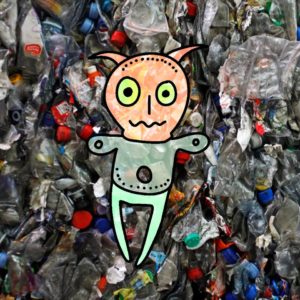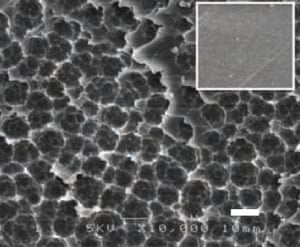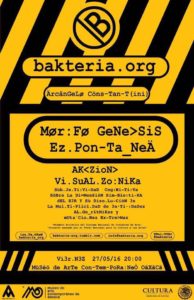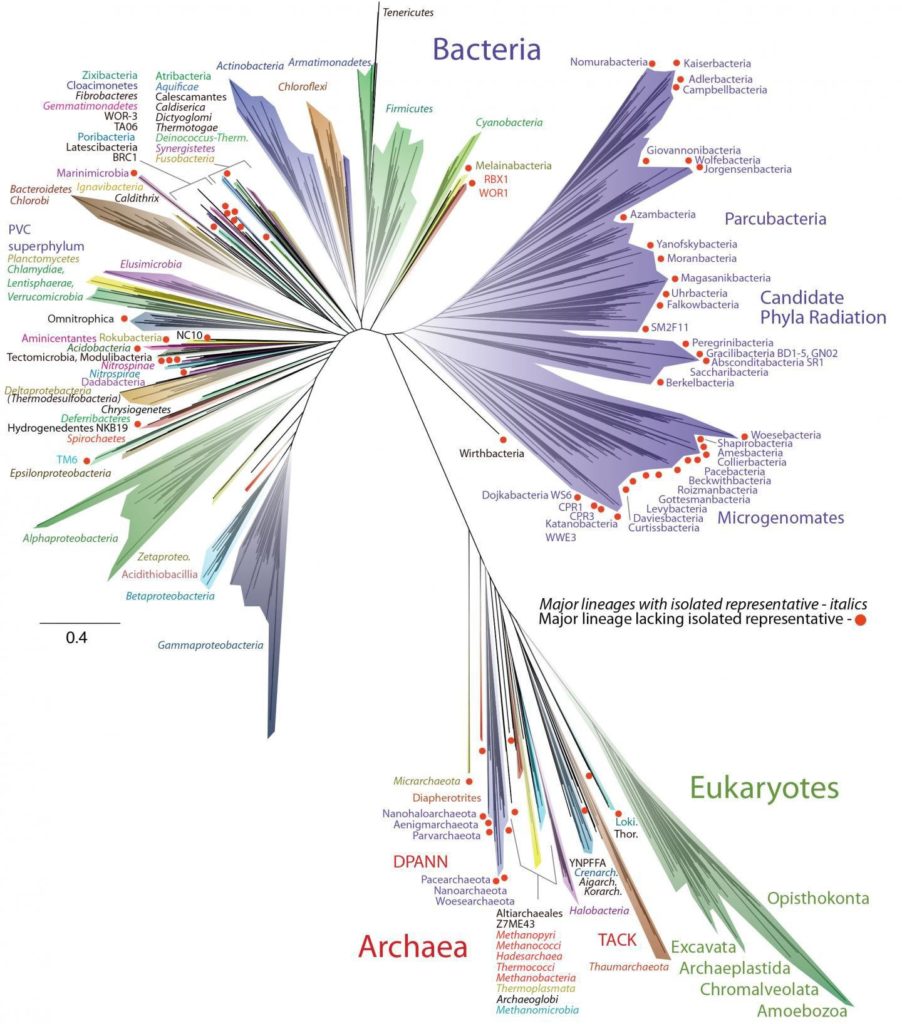
Sour_ce
NATALIE WOLCHOVER SCIENCE DATE OF PUBLICATION: 07.12.15.
07.12.15
TIME OF PUBLICATION: 7:00 AM.
7:00 AM
PARADOXICAL CRYSTAL BAFFLES PHYSICISTS
Interactions between electrons inside samarium hexaboride appear to be giving rise to an exotic quantum behavior new to researchers.Click to Open Overlay Gallery
Interactions between electrons inside samarium hexaboride appear to be giving rise to an exotic quantum behavior new to researchers. ANDREW TESTA FOR QUANTA MAGAZINE
IN A DECEPTIVELY drab black crystal, physicists have stumbled upon a baffling behavior, one that appears to blur the line between the properties of metals, in which electrons flow freely, and those of insulators, in which electrons are effectively stuck in place. The crystal exhibits hallmarks of both simultaneously.
QUANTA MAGAZINE
ABOUT
Original story reprinted with permission from Quanta Magazine, an editorially independent division of SimonsFoundation.org whose mission is to enhance public understanding of science by covering research developments and trends in mathematics and the physical and life sciences.
“This is a big shock,” said Suchitra Sebastian, a condensed matter physicist at the University of Cambridge whose findings appeared this month in an advance online edition of the journal Science. Insulators and metals are essentially opposites, she said. “But somehow, it’s a material that’s both. It’s contrary to everything that we know.”
The material, a much-studied compound called samarium hexaboride or SmB6, is an insulator at very low temperatures, meaning it resists the flow of electricity. Its resistance implies that electrons (the building blocks of electric currents) cannot move through the crystal more than an atom’s width in any direction. And yet, Sebastian and her collaborators observed electrons traversing orbits millions of atoms in diameter inside the crystal in response to a magnetic field—a mobility that is only expected in materials that conduct electricity. Calling to mind the famous wave-particle duality of quantum mechanics, the new evidence suggests SmB6 might be neither a textbook metal nor an insulator, Sebastian said, but “something more complicated that we don’t know how to imagine.”
“It is just a magnificent paradox,” said Jan Zaanen, a condensed matter theorist at Leiden University in the Netherlands. “On the basis of established wisdoms this cannot possibly happen, and henceforth completely new physics should be at work.”
It is too soon to tell what, if anything, this “new physics” will be good for, but physicists like Victor Galitski, of the University of Maryland, College Park, say it is well worth the effort to find out. “Oftentimes,” he said, “big discoveries are really puzzling things, like superconductivity.” That phenomenon, discovered in 1911, took nearly half a century to understand, and it now generates the world’s most powerful magnets, such as those that accelerate particles through the 17-mile tunnel of the Large Hadron Collider in Switzerland.
Theorists have already begun to venture guesses as to what might be going on inside SmB6. One promising approach models the material as a higher-dimensional black hole. But no theory yet captures the whole story. “I do not think that there is any remotely credible hypothesis proposed at this moment in time,” Zaanen said.
SmB6 has resisted classification since Soviet scientists first studied its properties in the early 1960s, followed by better-known experiments at Bell Labs.
Counting up the electrons in the orbital shells that surround its samarium and boron nuclei indicates that roughly half an electron should be left over, on average, per samarium nucleus (a fraction, because the nuclei have “mixed valence,” or alternating numbers of orbiting electrons). These “conduction electrons” should flow through the material like water flowing through a pipe, and thus, SmB6 should be a metal. “That’s the idea people had back when I started working on this problem as a young guy, around 1975,” said Jim Allen, an experimental physicist at the University of Michigan in Ann Arbor who has studied SmB6 on and off since then.
But while samarium hexaboride does conduct electricity at room temperature, things get strange as it cools. The crystal is what physicists call a “strongly correlated” material; its electrons acutely feel one another’s effects, causing them to lock together into an emergent, collective behavior. Whereas strong correlations in certain superconductors cause the electrical resistance to drop to zero at low temperatures, in the case of SmB6, the electrons seem to gum up when cooled, and the material behaves as an insulator.
The crystal structure of samarium hexaboride, or SmB6.Click to Open Overlay Gallery
The crystal structure of samarium hexaboride, or SmB6. OLENA SHMAHALO/QUANTA MAGAZINE. SOURCE: MIN-FENG
The effect stems from the 5.5 electrons, on average, that occupy an uncomfortably tight shell encasing each samarium nucleus. These close-knit electrons mutually repel one another, and “that essentially tells the electrons, ‘Don’t move around,’” Allen explained. The last half electron trapped in each of these shells has a complex relationship with its other, freer, conducting half. Below minus 223 degrees Celsius, the conduction electrons in SmB6 are thought to “hybridize” with these trapped electrons, forming a new, hybrid orbit around the samarium nuclei. Experts initially believed the crystal turns into an insulator because none of the electrons in this hybrid orbit can move.
“The resistivity shows it’s an insulator; photoemission shows it’s a good insulator; optical absorption shows it’s a good insulator; neutron scattering shows it’s an insulator,” said Lu Li, a condensed matter physicist at the University of Michigan whose experimental group also studies SmB6.
But this is no garden-variety insulator. Not only does its insulating behavior arise from strong correlations between its electrons, but in the past five years, mounting evidence has suggested that it is a “topological insulator” at low temperatures, a material that resists the flow of electricity through its three-dimensional bulk, while conducting electricity along its two-dimensional surfaces. Topological insulators have become one of the hottest topics in condensed matter physics since their 2007 discovery because of their potential use in quantum computers and other novel devices. And yet, SmB6 does not neatly fit that category either.
Early last year, hoping to add to the evidence that SmB6 is a topological insulator, Sebastian and her student Beng Tan visited the National High Magnetic Field Laboratory, or MagLab, at Los Alamos National Laboratory in New Mexico and attempted to measure wavelike undulations called “quantum oscillations” in the electrical resistance of their crystal samples. The rate of quantum oscillations and how they vary as the sample is rotated can be used to map out the “Fermi surface” of the crystal, a signature property “which is sort of the geometry of how the electrons flow through the material,” Sebastian explained.
Sebastian and Tan didn’t see any quantum oscillations in New Mexico, however. Scrambling to salvage Tan’s doctoral project, they measured a less interesting property instead, and, to check these results, booked time at another MagLab location, in Tallahassee, Fla.
In Florida, Sebastian and Tan noticed that their measurement probe had an extra slot with a diving-board-style cantilever on it, which could be used to measure quantum oscillations in the magnetization of their crystals. After failing to see quantum oscillations in the electrical resistance, they hadn’t planned on looking for them in a different material property—but why not? “I was thinking, fine, let’s stick a sample on,” Sebastian said. They cooled down their samples, turned on the magnetic field, and started measuring. Suddenly they realized the signal coming from the diving board was oscillating.
“We were like, wait—what?” she said.
In that experiment and subsequent ones at MagLab, they measured quantum oscillations deep in the interior of their crystal samples. The data translated into a huge, three-dimensional Fermi surface, representing electrons circulating throughout the material in the presence of the magnetic field, as conduction electrons do in a metal. Judging by its Fermi surface, electrons in the interior of SmB6 travel 1 million times farther than its electrical resistance would suggest is possible.
“The Fermi surface is like that in copper; it’s like that in silver; it’s like that in gold,” said Li, whose group reported surface-level quantum oscillations in Science in December. “Not just metals… these are very good metals.”
Somehow, at low temperatures and in the presence of a magnetic field, the strongly correlated electrons in SmB6 can move like those in the most conductive metals, even though they cannot conduct electricity. How can the crystal behave like both a metal and an insulator?
The ultra-pure SmB6 crystals used in the new experiments were grown in an optical furnace heated to 3,000 degrees Celsius at the University of Warwick in England.Click to Open Overlay Gallery
The ultra-pure SmB6 crystals used in the new experiments were grown in an optical furnace heated to 3,000 degrees Celsius at the University of Warwick in England. COURTESY OF GEETHA BALAKRISHNAN
Contamination of the samples might seem likely, if not for another surprising discovery: Not only did Sebastian, Tan and their collaborators find quantum oscillations in an insulator, but the form of the oscillations—namely, how quickly they grew in amplitude as the temperature decreased—greatly diverged from the predictions of a universal formula for conventional metals. Every metal ever tested has conformed to this Lifshitz-Kosevich formula (named for Arnold Kosevich and Evgeny Lifshitz), suggesting that the quantum oscillations in SmB6 come from an entirely new physical phenomenon. “If it were coming from something trivial, like inclusions of some other materials, it would have followed the Lifshitz-Kosevich formula,” Galitski said. “So I think it’s a real effect.”
Amazingly, the observed deviation from the Lifshitz-Kosevich formula was presaged in 2010 by Sean Hartnoll and Diego Hofman, both then at Harvard University, in a paper that recast strongly correlated materials as higher-dimensional black holes, those infinitely steep curves in space-time predicted by Albert Einstein. In their paper, Hartnoll and Hofman investigated the effect of strong correlations in metals by calculating corresponding properties of their simpler black hole model—specifically, how long an electron could orbit the black hole before falling in. “I had calculated what would replace this Lifshitz-Kosevich formula in more exotic metals,” said Hartnoll, who is now at Stanford University. “And indeed it seems that the form [Sebastian] has found can be matched with this formula that I derived.”
This generalized Lifshitz-Kosevich formula holds for a class of metallike states of matter that includes conventional metals, Hartnoll says. But even if SmB6 is another member of this “generalized metal” class, this still does not explain why it acts as an insulator. Other theorists are attempting to model the material with more traditional mathematical machinery. Some say its electrons may be rapidly vacillating between insulating and conducting states in some novel quantum fashion.
Theorists are busy theorizing, and Li and his collaborators are preparing to try and replicate Sebastian’s results with their own samples of SmB6. The chance discovery in Florida was only the first step. Now to resolve the paradox.
Original story reprinted with permission from Quanta Magazine, an editorially independent publication of the Simons Foundation whose mission is to enhance public understanding of science by covering research developments and trends in mathematics and the physical and life sciences.
 Por Génesis Gatica Porcayo
Por Génesis Gatica Porcayo













